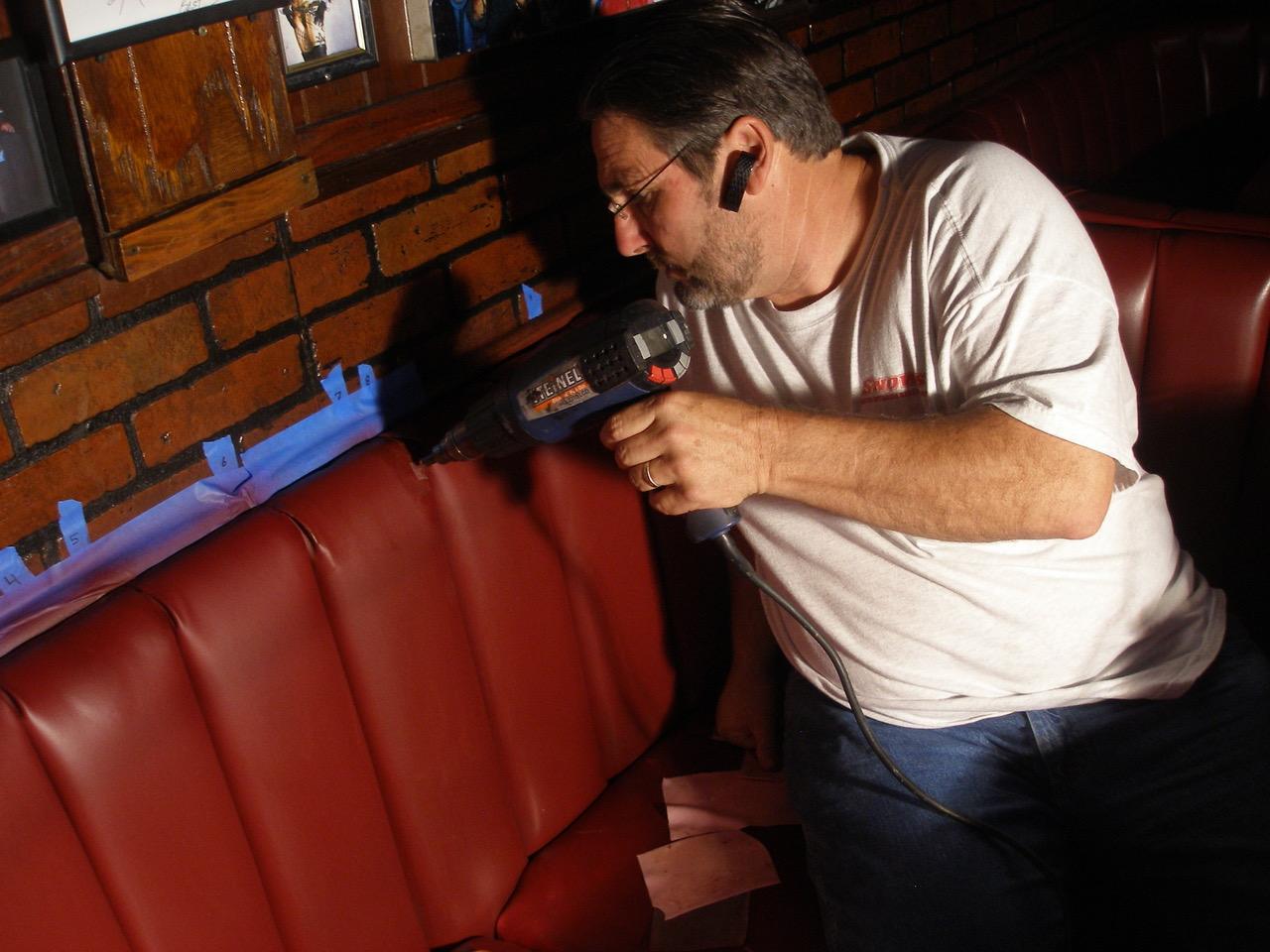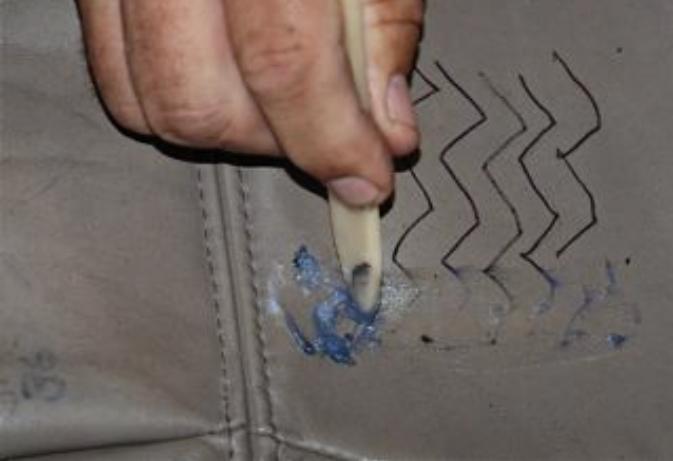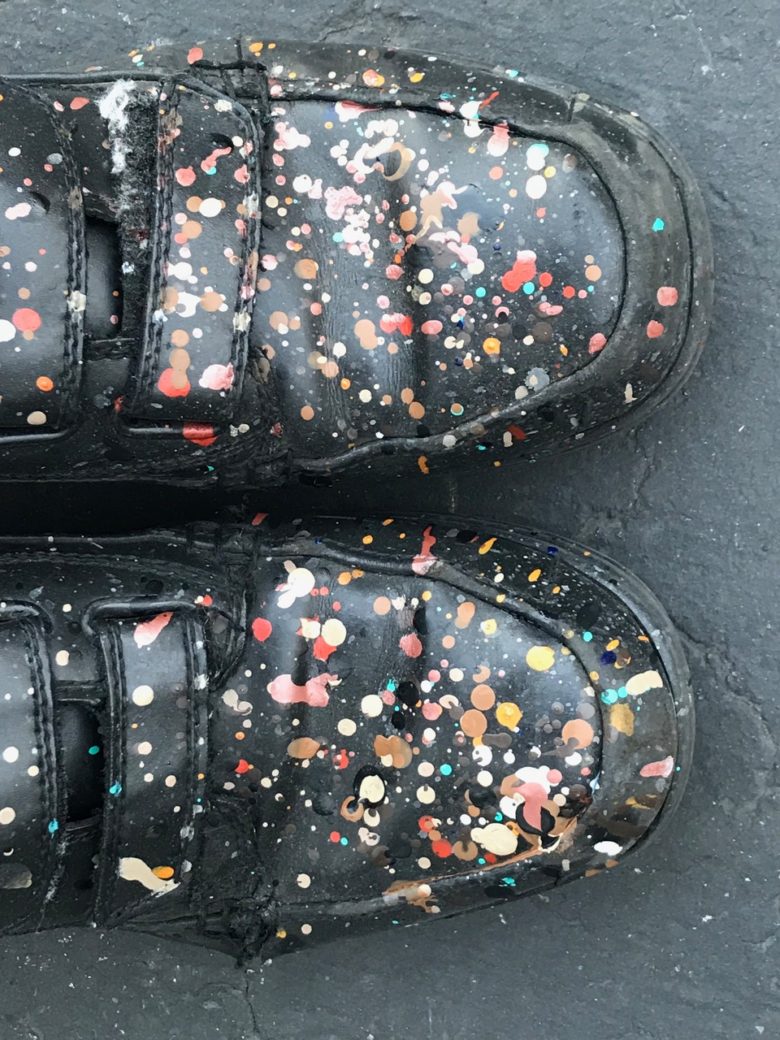
LEATHER CLEANING: ZERO TO EXPERT IN 15 MINUTES
Will Reading This Article Make You An Expert In Leather Cleaning?…
By Doug Snow and Kian Amirkhizi
Well … maybe not an expert, but well on your way to becoming appropriately informed.
In the past, when leather seats needed cleaning, you may have grabbed the closest bottle of all-purpose cleaner and an equally proximate brush. You began scrubbing away, oblivious to the rich heritage and subtleties of leather and its proper care. Well, put down the brush and bottle and let’s learn a little about leather.
Leather interiors are often standard equipment in today’s vehicles as competing automotive brands vie for the customers’ increasing taste for luxury. The distinct odiferous signature from a well-tanned piece of leather is a sensual absolute. In other words, it just smells good!
The customers who drive the market for increasing use of leather will also drive into your establishment looking for service to keep that leather in like-new condition. They will be looking for some answers to their maintenance questions. Call me old-fashioned, but I think it is always a good policy to know what you are talking about!
Just why is leather so darn popular? Well, first it is a by-product of the meat industry, so there will always plenty of raw materials around. The remarkable thing about leather is its unique ability to withstand everyday use with remarkable agility and resilience and still look and feel amazing. Leather, if taken care of properly, will last nearly a lifetime. But before we can take care of leather, we first need to learn how to speak leather!
Learning The Language Of Leather
Leather is the skin or hide of any animal that has been made resistant to decay through the tanning process. When leather is tanned, it undergoes specific chemical treatments to discourage the natural deterioration process that all living things experience.
For illustrative purposes, let’s say you were a caveman way back when. You just killed a buffalo and ate all the meat off the carcass. Now you are thinking, “My, it sure gets cold out here. I should make a nice fur coat outta this skin here” and, you add, cunningly, “all the other cavewomen will go crazy over it!” So, you put the skin around you and you’re looking pretty fly with your new fur coat, showing it off to your fellow cave-peers.
A couple of days go by and you notice that the skin is starting to stink, holes have developed, maggots are present and the flies are horrendous. Since you are a caveman, you do not understand that the hide is undergoing rapid deterioration caused by bacterial decomposition. Later on, mankind overcomes this smelly reality by developing ingenious methods of using tannins found in nature to preserve the hides for use.
Early tanners were quite resourceful, using urine, dung and animal brains in the process. Tanning was necessary to advanced civilizations as history bears out the use of leather in so many crucial areas. In fact, one of the oldest preserved bodies found on a mountain range between Italy and Austria was the Otzi Icemen. He was found in nearly perfect condition with various leather items around him. They estimated his age to be around five thousand years old. You just gotta say … there’s something special about that Italian leather!
I had the chance to tour a couple of tannery facilities in New York and elsewhere. Generally, there are two types of facilities; one for the “wet process,” the other a “finishing” plant. I witnessed firsthand where the hides came into the facility fresh off the carcass and were sprinkled with rock salt and stacked on pallets for processing. They were extremely smelly, with a lot of flies! The wet process takes the unprocessed hides and tans them. This prepares them for the finishing plant where color and coatings are sprayed. No matter how many different leathers you might imagine or have seen, you may be relieved to find out there are only three major categories to contend with: aniline, protected and nubuck.
- Aniline: This is a leather that has been tanned and dyed with no protective coating on the surface. Yes, it is naked. Usually, it is colored by placing the leather in vats with aniline dyes. A very small percentage of leather qualifies for this use as most hides are scarred or cosmetically marred as a result of range conditions.
Aniline leather is almost never used in an automotive interior due to its inherit lack of protection, making it prone to excessive wear and staining. Anilines are used mostly in fine furniture, aircraft and clothing.
To test for aniline, wet the tip of your finger and place it onto leather. If the leather darkens, then the leather is not protected and allows the moisture on your finger to absorb into the material. Obviously, with the prodigious amounts of food and aqueous materials consumed in the interior of modern automobiles, aniline just would not work out! However, you might find this material in custom automobiles with extensive aftermarket upgrading.
Upholsterers seeking something unique and luxurious may use this material without realizing the potential maintenance issues that will arise once the material is placed in use. Cleaning is performed using a specific aniline leather cleaner that is pH balanced. When cleaning, use a cellulose sponge and wet the material evenly from seam to seam to prevent water rings.
- Protected: The most common leather material in use for automobile interiors. This leather has a protective coating on the surface, usually polyurethane. Most leather that is protected is corrected as well.
Correcting leather is essentially stamping a grain in the hide to create consistency in the grain pattern, which corrects the minor imperfections resulting from bug bites or scratch marks from barbwire fences.
As a technician, maintaining the integrity of the finish system is your top priority. Protected leathers can also be splits, as well. The hide is very thick when initially removed from the animal. It is split two, sometimes three, times. The top portion of the hide is the highest quality due to its natural, inherent strength and flexible qualities present in the outer layer of the skin. The middle and bottom splits are usually significantly inferior, resting heavily on the coating for strength and durability. Regrettably, splits are quite often used in interiors, creating havoc for us techs.
- Nubuck: Nubuck is created by abrading the surface of a top-grain leather with a sanding apparatus. This creates a nap similar to suede but not nearly as thick. Nubuck does not have a protective coating and is therefore prone to the same issues as aniline.
Basic Care Of Leather
· Step 1—No Sun!
We are only focusing on the care of protected leather, since that is the most common. How do you take care of protected leather? Primarily, the importance is to keep the seats out of the sun. The sun is generally the single most damaging element for any interior component. Do not park the interior in direct sunlight if you can help it, but if you cannot help it, make sure to have a foil solar blocker. (Just learning how to re-fold them might be challenging!)
· Step 2: Keep it Clean
The next biggest concern is keeping theleather clean. Soil is very detrimental to the surface of the leather. Soil acts like an abrasive, rubbing against the protective coating. Keeping the surface clean is achieved through regular cleanings.
· Step 3: Condition!
After years of use, fissures develop in the finish system and the leather starts to lose the natural oils (called fat liquors) impregnated into the leather which create the supple and soft texture. These oils dissipate through exposure to the elements and possibly through the use of harsh cleaning chemicals.
Re-introducing these oils improves the “hand” (feeling of softness) of leather, plus aids dramatically in the cleaning process, if the proper oil is used. If you are interested in this time-tested technique, please consult our previous article, entitled “The Process,” which extensively details the use of conditioning oils in the cleaning process.
The problem with most cleaning solutions used on leather is they are harsh in nature, which may have a drying effect. Additionally, automotive owners are prone to shopping in an auto parts store where they purchase worthless one-step cleaner/conditioners that do neither. Most of these are an amalgamation of silicone and soap. Do not be fooled, silicone conditioners do not improve anything on your leather, and it is my contention that they actually accelerate the aging process. I know some will differ with my assessment, but they are not writing this article, I am.
Cleaning Leather: Choosing The Right Cleaner!
The process of cleaning leather is simple. Take the appropriate leather cleaner and spray it onto the rag, then wipe the leather. However, this rarely produces satisfactory results as the soil is heavily caked on and consists of a variety of hard to remove materials.
First, you must choose a leather cleaner that has the power to clean effectively without damaging the leather. Once you find that cleaner, then you must effectively scrub the surface without damaging the protective polymeric coating.
If you do damage that coating, you must spray the surface with a clear protective topcoat, sealing the open pores and preventing further deterioration of the finish system. The safest choice for scrubbing is a horsehair brush.
Horsehair has magical properties when cleaning leather; they just do not smell very nice once they are wet! Horsehair brushes have the softness inherent in the bristles to clean without damaging the surface. The stiffer the brush, the greater the friction and like any physical construct, friction will cause wear.
Educating yourself on proper leather cleaning techniques can avoid many potential headaches in the future. Leather will always have a mystique that alternative man-made materials will never match. Keep the magic alive by properly maintaining automotive interiors with the right cleaning compounds and cleaning implements.
Taking the next step
What makes a leather technician more capable when it comes to cleaning is the level of service he is able to perform. Many times the interiors that need cleaning have never been properly maintained. This will require a dangerously forceful technique. Leather techs can clean aggressively because, if they damage the leather, they have the wherewithal to fix it. That is generally not the case with the average detailer, as they do not possess the requisite skills to repair a damaged finish system.
However, with a little training, it is possible to go beyond the limited confines of cleaning by providing the next step in leather care: re-dyeing and touch-ups. Often, this is necessary when the interiors have been neglected to such a point that cleaning will no longer restore the leather to an aesthetically appreciable condition.
In this case, the restoration of the colorized flexible coating on the surface is needed. This can be achieved through aftermarket application of flexible coatings that are designed for leather. Maybe it is time to take a bold step and offer this service to your customers.
Get the training and make the commitment. It is a rewarding experience to resurrect a decrepit interior from the fingers of interior death. Your customers will seek out this service, if needed, and they will likely be purchasers of other goods and services that compliment your existing business.
… fifteen minutes have passed and now you are the expert!




